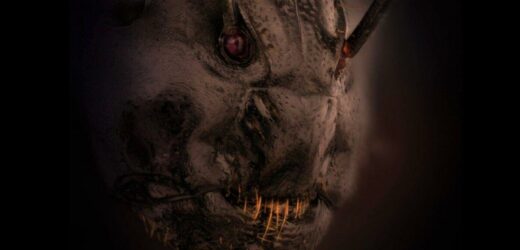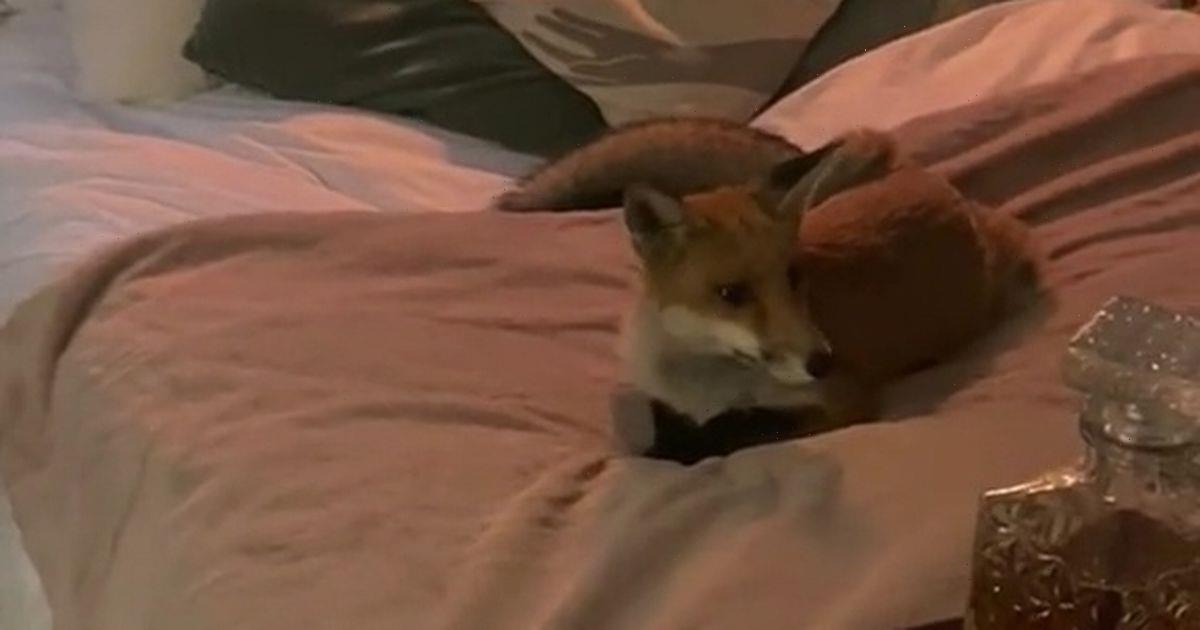Deborah Meaden shows of her wildlife photography skills
We use your sign-up to provide content in ways you’ve consented to and to improve our understanding of you. This may include adverts from us and 3rd parties based on our understanding. You can unsubscribe at any time. More info
A photographer’s chilling snap of an ant head close-up reveals the insect in terrifying detail. It has been put on display for the Nikon’s Small World Photomicrography Competition. Lithuanian photrapher Eugenijus Kavaliauskas’ picture was one of 57 submitted for the Images of Distinction in Nikon’s competition. Out of 1,300 entries from 72 countries, according to Nikon, Mr Kavaliauskas horror film-esque ant photo didn’t quite clinch the top spot, but it has kicked up quite the storm online. Having previously worked as a bird photographer before switching to insects, the Lithuanian’s website says Mr Kavaliauskas used reflected light to capture the image.
The striking image shows the creature with dark red eyes, long sharp teeth and what looks like a furious expression on its face. This has warranted a huge response from alarmed social media users.
Responding to the picture, Twitter user Megan Davis wrote: “Maybe people making horror movies were really just kids who had microscopes?”
Another user tweeted: “For the first time ever in history, the ‘clear photograph’ of an ant is released and that’s how it looks – the very same insect roaming inside your house, garden and everywhere!”
Responding to an Instagram post showing the image, one user wrote: “Thank you for ruining ants. I thought they looked cute. Now I’m terrified.” Another said: “Now imagine a million of these rushing you.”


Mr Kavaliauskas told Insider that he lives near a forest, making it easy for him to go out and snap the ant with his camera. He said: “But it’s boring to take a photo of an ant, running banally, on the ground.
“I’m always looking for details, shadows, and unseen corners. The main goal of photography is to be a discoverer. I am fascinated by the creator’s masterpieces and the opportunity to see God’s designs.” Speaking about how the ant looked under the microscope, he said “there are no horrors in nature”.
The Nikon competition highlights talented photographers recognised for their “excellence in photography through the microscope”, according to CNN. Mr Kavaliauskas missed out on the top spot, with the prize going to Michel Milinkovitch and Grigorii Timin.
These photographers snapped a stunning fluorescent image of the front paw of a Madagascar giant day gecko’s embryo, which they managed to capture using a 63x magnification to document the tiny veins and bones in the hand of the embryo.

The pair used image-stitching to merge hundreds of snaps together to create the final image of the gecko in spectacular detail. The picture shows the nerves in a cyan color and the bones, tendons, ligaments, skin and blood cells in a number of warmer colors.
Mr Timin was quoted as saying on Nikon’s website: “This embryonic hand is about 3 mm (0.12 in) in length, which is a huge sample for high-resolution microscopy.
“The scan consists of 300 tiles, each containing about 250 optical sections, resulting in more than two days of acquisition and approximately 200 GB of data.”
He added: “This particular image is beautiful and informative, as an overview and also when you magnify it in a certain region, shedding light on how the structures are organized on a cellular level.
“The Nikon Small World Competition is a great opportunity to share how impressive nature is on a microscopic level, not only within a scientific community but also with the general public.”
DON’T MISS
Major cable cut in France just hours after Shetland incident [REPORT]
Britons scramble to swerve blackouts with £1,400 batteries [INSIGHT]
Major energy step as new rooftop tech to deliver more power than solar [REVEAL]


Nikon said in a press release: “Masterfully blending imaging technology and artistic creativity, Timin utilized high-resolution microscopy and image-stitching to capture this species of Phelsuma grandis day gecko.
“[With] a visually stunning and painstaking technique, Timin used image-stitching to merge hundreds of images together to create the final image of his gecko.”
Eric Flem, communications and CRM Manager, Nikon Instruments, said: “Each year, Nikon Small World receives an array of microscopic images that exhibit exemplary scientific technique and artistry. This year was no exception.
“At the intersection of art and science, this year’s competition highlights stunning imagery from scientists, artists, and photomicrographers of all experience levels and backgrounds from across the globe.”
Source: Read Full Article


